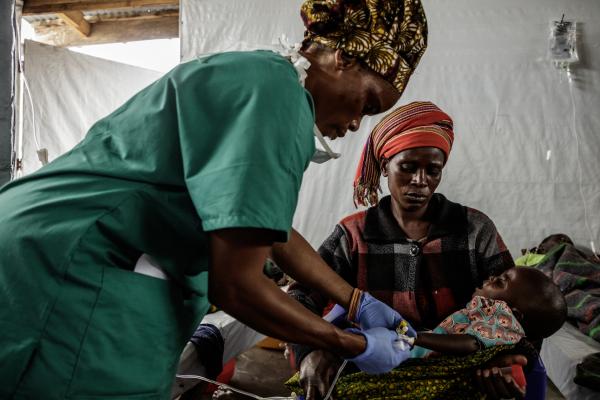2022 was a year marked by high-profile humanitarian crises. From the war in Ukraine to a rare outbreak of Ebola in Uganda to the ongoing migration crisis in the Americas, emergencies dominated the headlines. But what about the crises that unfolded outside the spotlight? As the year comes to a close, millions of people are still living through forgotten emergencies, and, as has been the case for more than 50 years, Doctors Without Borders/Médecins Sans Frontières (MSF) is there to help.
MSF teams are often first on the scene providing medical humanitarian aid during critical situations like epidemics, disasters, and conflicts all over the world. And because of the organization’s independence, MSF responds to these crises based solely on need, regardless of how many headlines they garner. As we explore some of the world’s most pressing forgotten emergencies, see how MSF works to achieve their mission of providing lifesaving care and how you can support them.
Bangladesh
Hundreds of thousands of Rohingya people are still stranded in massive refugee camps in the Cox’s Bazar district of Bangladesh after fleeing targeted attacks in Myanmar. Over the past several years, waves of violence in Myanmar have forced at least 860,000 people across the border into Bangladesh, where they are trapped in squalid and deteriorating conditions with no resolution in sight.
MSF has been providing care in the region since 2009, but they scaled up their medical response in 2017 to care for an influx of refugees, and now run nine health facilities in Cox’s Bazar. MSF works to provide emergency and intensive care, pediatric care, obstetric care, and sexual and reproductive health care, along with caring for survivors of sexual violence, and patients with non-communicable diseases. MSF is also providing water and sanitation services for people in the camps.
Syria
Media attention has moved on after 11 years of war in Syria, but a record 14.6 million people still need humanitarian assistance. It is the country with the largest number of internally displaced people in the world, most of whom are women and children.
MSF operates in Syria where possible, but ongoing security risks and access constraints continue to severely limit the organization’s ability to provide humanitarian assistance that matches the scale of the needs. In areas where access could be negotiated, such as northwest and northeast Syria, MSF teams run and support hospitals and health centers, and provide health care through mobile clinics. Starting in September of this year, MSF’s teams in those areas have also been responding to a major cholera outbreak, compounding the humanitarian crisis caused by war.
Yemen
In Yemen, civilians bear the brunt of years of indiscriminate conflict. MSF not only provides lifesaving care to people injured in these outbreaks of violence, but also treats patients suffering the long-term effects of war, such as mental illness, malnutrition, and difficulties in accessing essential services, such as mother and child care.
Although the attention of the world has largely moved elsewhere, MSF continues to call for a radical overhaul of the aid system in Yemen. Increased access to aid is urgently needed to ensure an effective response to emergencies, and the provision of health care over the long term.
Democratic Republic of Congo (DRC)
MSF projects in DRC are among the organization’s largest worldwide. Teams on the ground respond to epidemics, natural disasters, and conflict, while dealing with the consequences of heavy security risks in the eastern part of the country. All of this occurs with little awareness or involvement from the rest of the world.
Most of MSF’s work in DRC involves malaria, which causes four times more deaths per year than conflict, meningitis, cholera, measles, and respiratory diseases combined, and affects children most severely. On-the-ground efforts involve the deployment of mobile teams in emergencies to provide malaria care, but MSF also responds to outbreaks of infectious diseases like yellow fever, cholera, and Ebola. They also continue to support DRC’s national HIV/AIDs program.
Most recently, MSF teams are helping care for tens of thousands of people displaced by violence in the Rutshuru region who have taken shelter in informal camps in Kanyaruchinya, near Goma, and the surrounding areas. At the MSF-supported Kanyaruchinya health center, the number of consultations has increased dramatically, from an average 80 per day in October to 250 in November. To respond to the increasing medical needs, the group is strengthening its support to the center’s medical team to receive patients 24 hours a day.
MSF’s goal is to deliver lifesaving aid wherever the need is greatest. MSF teams respond to emergencies at a moment’s notice, regardless of how much attention they get in the media. These crises may be forgotten by many in the international community, but not by MSF’s teams on the ground all over the world.
As the new year approaches, help ensure that Doctors Without Borders can continue saving lives and helping those most vulnerable around the world. Your support can help MSF teams save lives around the world.

